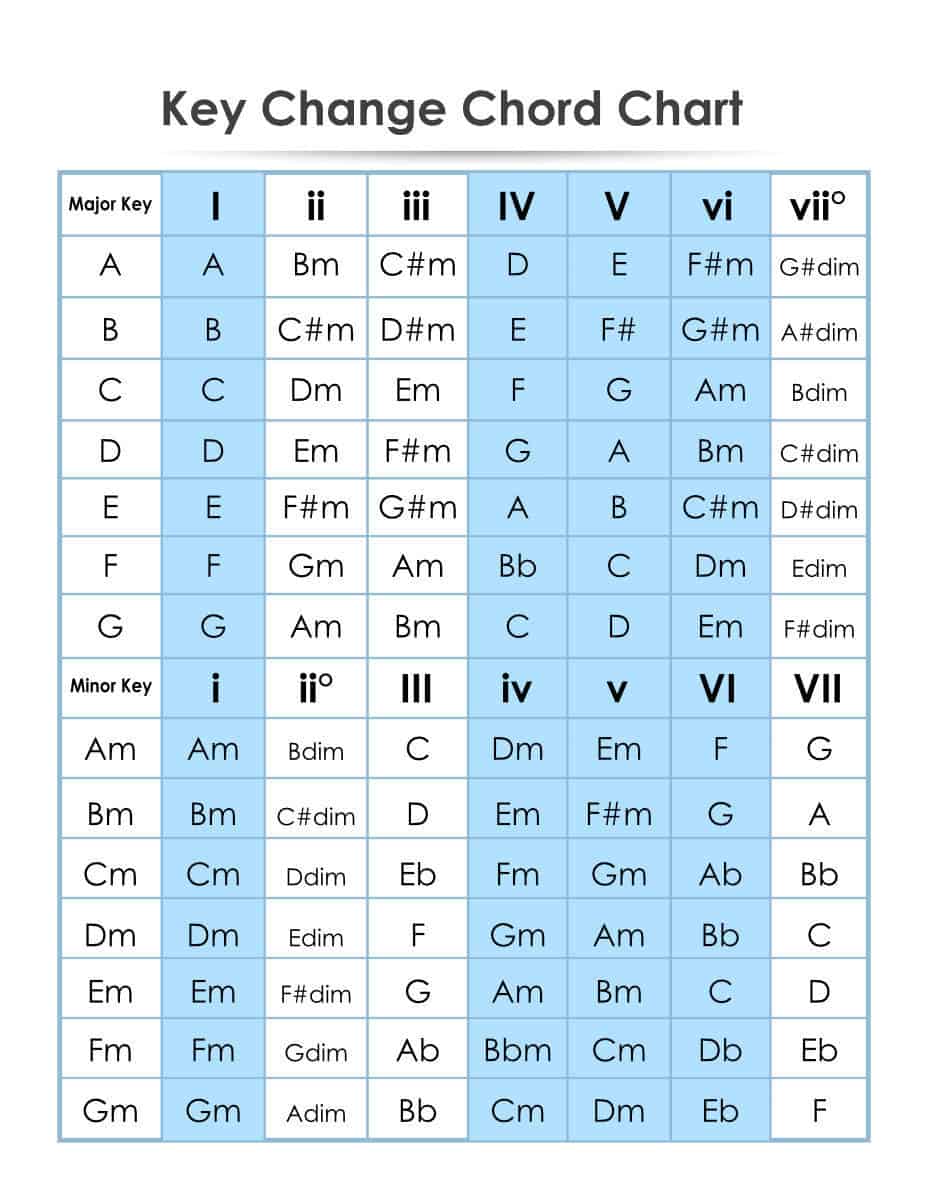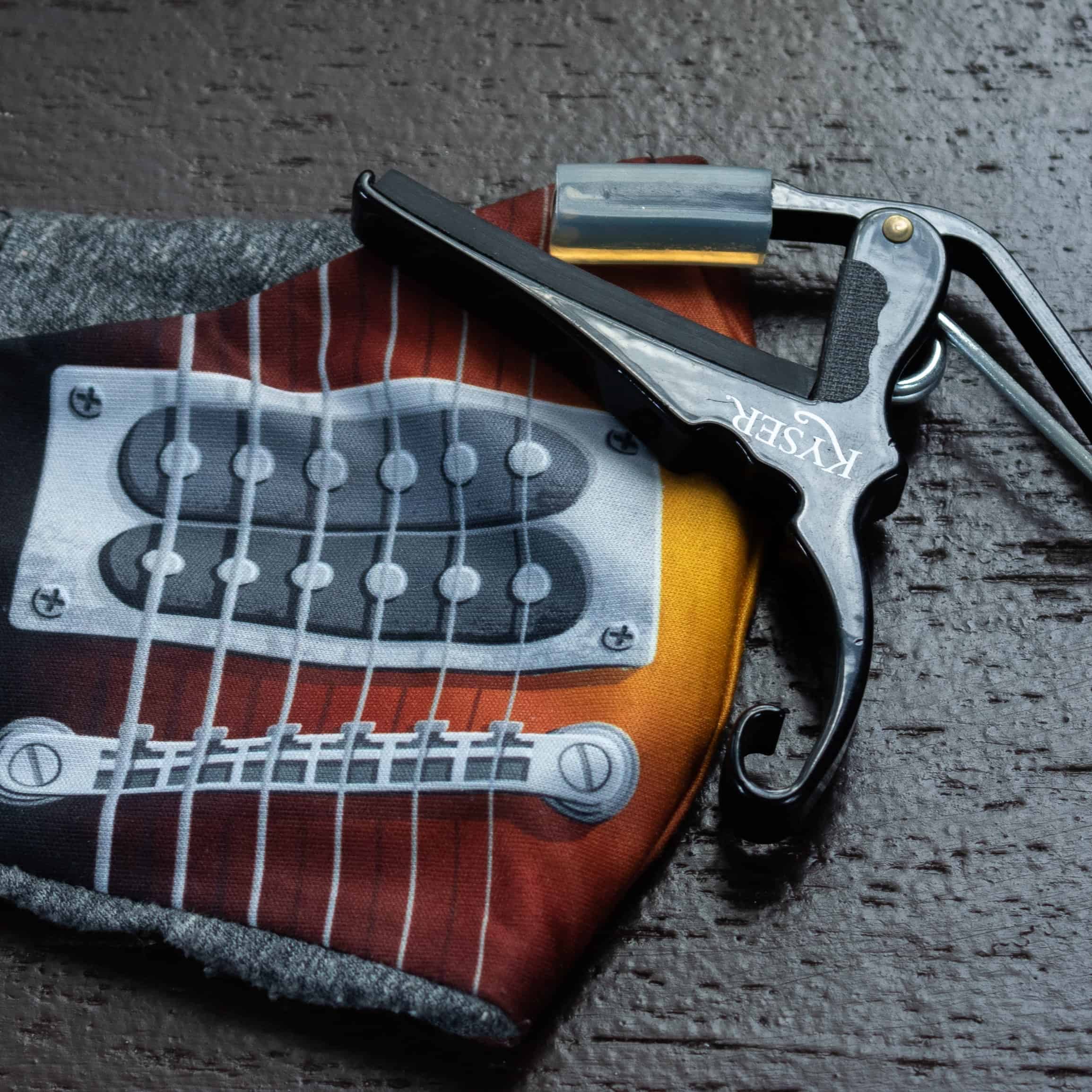Let's "Transpose" A Song
"Transpose" is another name for changing the key of a song.
Being able to transpose a song from one key to another is a valuable skill that I firmly believe all guitar players should know.
It personally has helped me further my skills as a guitarist over the years, by being able to change keys while I'm playing a song with ease.
When I first started to transpose keys, I did it the hard way. I simply counted up (or down) for each chord I wanted to change.
So, if I was in the key of D and wanted to be in the key of E, I'd count up and re-write the chord on the charts.
This seems simple enough, and it is to a certain extent. But counting up on every chord just isn't an efficient way to do it. Especially when you go more than one step (like E to Bb- good luck!). Plus, you're opening yourself up to a lot of mistakes.!
But thankfully I found a much easier way to do this, and I'm going to share it with you. It's called a Key Change Chord Chart. Though you could just as fittingly call it a Transposition Chart.
Using The Key Change Chord Chart

RGS Members:
Download your copy of the Key Change Chord Chart <<
Not a member yet? No problem. Learn how to get free access.
The Key Change Chord Chart is a simple table that shows all major and minor keys, and the rows contain all chords in those keys. The roman numerals represent the scale degree of each chord in the key.
Notice specifically the columns highlighted in blue. These are your most common chords in any key. They're the I, IV, V, and vi chords (one, four, five, and six). They're not the only chords you'll use, but they will cover 80% of the songs you'll play.
When you want to change keys, you simply find the key that you're in (the I chord) and move to the key you want to transpose to.
Let's take "Blowing In The Wind" by Bob Dylan. It's in the key of G and the chord chart has G, C, D (the I, IV, and V chords).
The key of G is a little too high for my voice, so I want to transpose this to a key that's a little easier for me to sing. I'm going to transpose this to the key of D, since I know it's a better key for me.
So I'll grab my chord chart and my pen, and then look at the Key Change Chord Chart. I know that all of the G chords will be replaced with D chords, so I'll go through and cross out all of the Gs and replace them with Ds.
Now, the C is under the 'IV' column on the chart in the key of G. That's because C is the IV chord in the key of G. So I'll go to the D Major row and see what the IV chord is.
It's G, so I'll then go to the chord chart and replace all of the Cs with Gs.
Lastly I'll go the D chord in the key of G and see that it's in the V column. You can go to the D row and find the V chord and see that it's A.
So now I'll replace the original Ds on the chart with As.
Using A Capo To Change Keys

An alternative to this is to use a capo on your guitar. If the song is a little low you can simply use a capo to raise the key. You'd play the same chord shapes, but they'd be in a different key.
If you'd like to learn more about how to use a capo check out Guitar Capos Explained.
Let's practice this with a slightly more complicated song. We'll use "Country Roads" by John Denver, and we'll start in the key of G. The chords in the chorus look like this:
G-D-Em-C
G-D-C-G
Now look at the Key Change Chord Chart and see if you can figure out what scale degree each of these chords are in the key of G.
(Answers below)
I-V-vi-IV
I-V-IV-I
Is this what you got? Good job! Now, we're going to transpose this up one full step to the key of A. Go ahead and use the chart and see if you can transpose every chord to the key of A.
I'll list the answers below again.
Ready?
A-E-F#m-D
A-E-D-A
How did you do?
Practice Transposing With The Key Change Chord Chart

One easy way to practice changing keys is to write down a song you're learning or already know in a different key. Writing things with a pen and paper is shown in studies to help you remember those things better.
Way better than typing or just relying on your memory. By writing out the chords in the key of A, you're subconsciously memorizing the common chords in that key.
To build on that, you could play the song in the new key. Most guitar players learn to play in the key of G Major and C Major and spend a lot of time there.
But if you were to play those songs in A Major and D Major (respectively), you'd be adding to your chord repertoire. And that's always a good thing.
The reason the I, IV, V, and vi chords are highlighted is because they're common chords in every key. By practicing even just these chords you'll be able to easily tackle most of the songs you'll want to learn regardless of key.
The lesson I linked to earlier about Common Chord Patterns is a great way to use this Key Change Chord Chart today. It will give you the patterns (like I-V-vi-IV) and you can experiment playing them in different keys.
So, give it a shot and never worry about transposing songs again!
---
I wish I had a chart like this when I first started out. It would have saved me a lot of grief! But I guess that's all just part of the journey.
Thanks for joining me today. I hope you enjoyed this lesson and apply it to your own playing.
I have a favor to ask. I've got 9 days left in this 30-day coaching challenge and I'd love to hear your suggestions on videos you think I should make. Leave a comment with the lesson you'd like to see the most!
How to Change the Key of a Song
Members of Real Guitar Success can access a complete lesson on Changing Keys. Go here (log in first).
Not a member yet? No problem. Get in on the FREE 14-Day trial. You'll also have access to hundreds of lessons, videos, and downloads, get your questions answered... And that's just the "tip of the iceberg". https://realguitarsuccess.com.

Thank you. I will practice transposing the songs using your chart so I do not need to rely on a capo. Thank you.